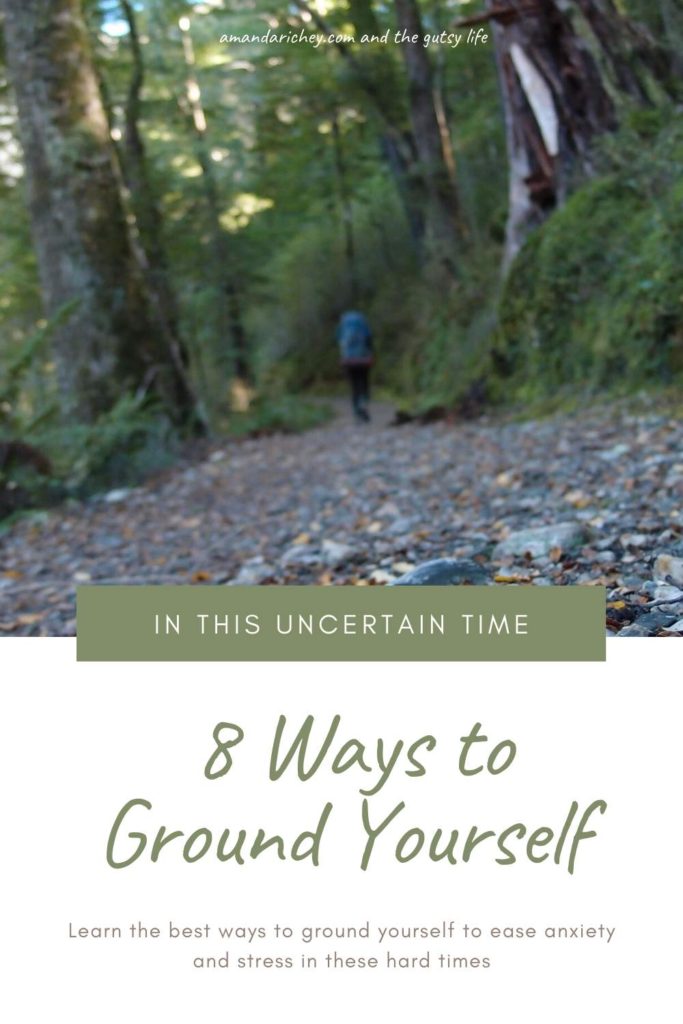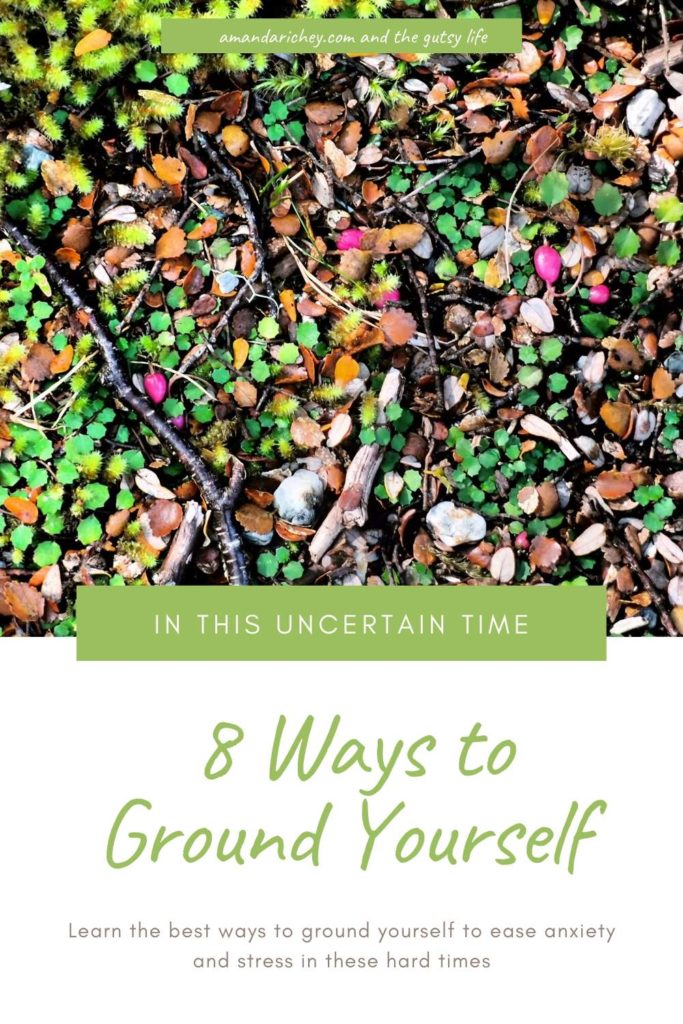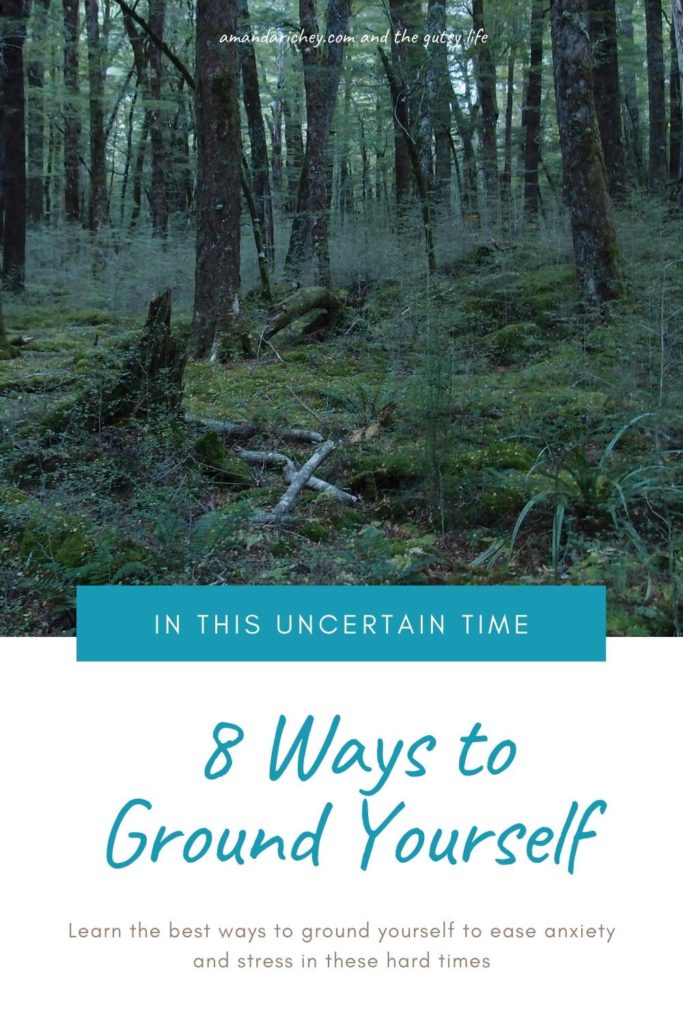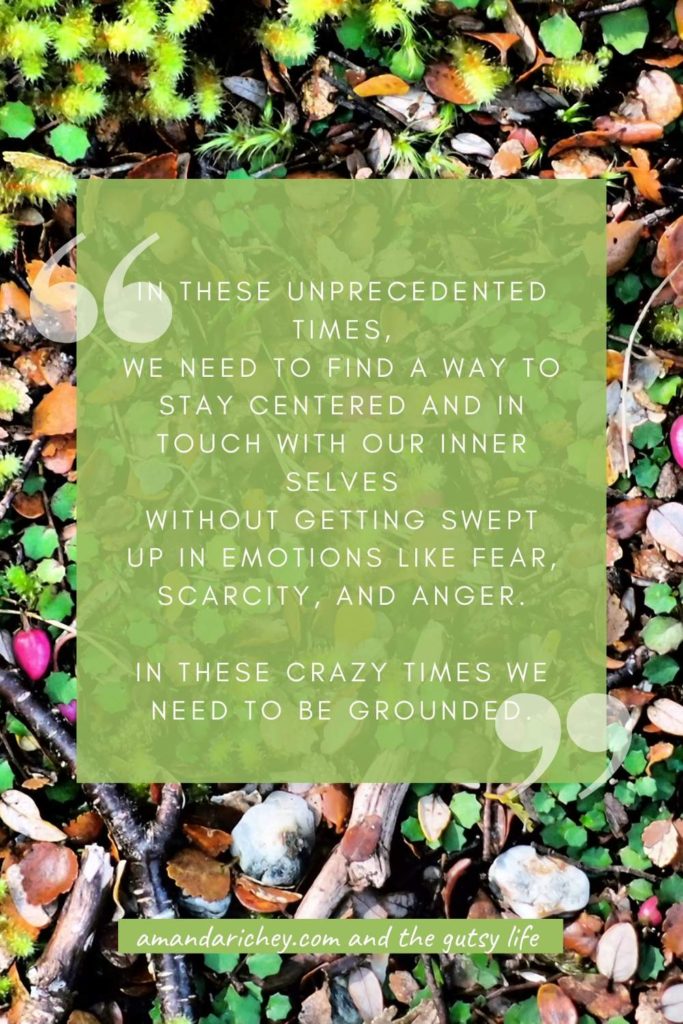Why We Need Grounding More Than Ever:
In these unprecedented times, we need to find a way to stay centered and in touch with our inner selves without getting swept up in emotions like fear, scarcity, and anger.
In these crazy times we need to get grounded.

Grounding yourself is the process of balancing and reconnecting your physical, emotional, mental and energy state. Grounding is an exercise that connects you energetically to the earth. It allows you to be more present in the moment, out of your head, and authentically in your body. Grounding techniques are designed to redistribute the energy from your head or mind into your body which has an almost instant calming effect.
When do you Need to get Grounded?
In stressful and anxiety ridden times, grounding is of utmost importance. When we are stressed, fearful, and uncertain, we are in our heads. When we are in our heads, we become separated from our feelings and our body, which results in a disconnect.
For many ancient traditions, meditation and mindfulness practices assist the body’s energy in moving from the head to the heart by connecting to the body’s subtle energy.
In Ayurvedic medicine, this is called prana, and in Chinese medicine it’s called qi. In these Indian and Chinese traditions, the understanding is that a life force of energy flows through the body (extending beyond it), and blockages and imbalances in the flow of this energy lead to illness. Modern medicine is beginning to agree.
How Can You Tell if You Need Grounding?
If you’re feeling:
Anxious
Disconnected
Emotional or unstable
Stuck in your head and thoughts
Inability to focus
Stress
Poor sleep
Feeling out of control

The Science:
Ancient traditions have long understood that the body and mind are connected to rest of the world by a life force or energy. Reconnecting to that energy can be considered grounding. Modern science has been slow to acknowledge this connection, but its existence is recognized.
The term grounded is often applied to stabilizing electricity. But, did you know that the surface of the planet is electrically conductive, and its electron supply is replenished by the global atmospheric electrical circuit?
This means that the world is made up of electrical and magnetic fields, or currents (electromagnetic). We too are made up of electromagnetic currents. Our bodies are endlessly emitting vibrational signals out from our organs, while also receiving them from the objects around us.
Modern lifestyle separates humans from such contact. How? Shoes, pavement, carpet, etc.
For example: Substances called conductors allow electricity to travel easily, while other substances called insulators inhibit the flow of electricity. To allow our energy to flow through us and into the ground, and vice versa, we need to connect with the ground without insulators (without shoes, pavement, carpet etc. between us)
The Studies
In the field of Environmental medicine, a handful of studies have found that that this disconnect may be a major contributor to physiological dysfunction and unwellness, and that grounding practices can alleviate some of this.
Several studies have concluded that grounding helps balance the autonomic nervous system (ANS), the largely involuntary part of the nervous system that regulates things like the heart and respiration rates, digestion, perspiration, and urination.
The ANS is divided into two parts; the sympathetic nervous system and the parasympathetic nervous system. The sympathetic system is associated with the fight-or-flight response, and parasympathetic system is responsible for rest; slowing the heart rate and conserving the body’s energy. Homeostasis is the balance between the two systems.
These studies suggest that grounding may support the cardiovascular system by activating the parasympathetic nervous system. This is especially important in times when the sympathetic nervous system (stress response) is more activated (like under crisis).
One study confirmed that grounding has a balancing effect on the sympathetic and parasympathetic nervous system, and a restoration of normal tone that reduces the stress response. Which may explain in part why people experience lower blood pressure and improved arrhythmias after grounding activities.
Another positive effect of grounding appears to be its neutralizing effect on free radicals. Studies indicate that the influx of free electrons absorbed into the body through direct contact with the Earth may neutralize free radicals and assist in reducing inflammation.
Studies also indicated that grounding the body to the Earth alters measures of immune system activity and pain by increasing the body’s white blood cell production. These findings have been used to help ease chronic and acute pain as well as autoimmune disease.

Eight Ways to Get Grounded
Now that you know all of the amazing health benefits of grounding let’s get you grounded:
1. Walk barefoot outside. Even just on a small patch of dirt or lawn. If you can, walk on the beach. Lay or sit on the ground. Allow the energy from the earth to have time to pass through you. Slow down. Breathe.
2. Meditate. With eyes closed and seated (preferably on bare earth), visualize a curved beam of light or energy going from your heart down to the Earth’s core. A complementing curved energy beam extends from the core to your heart creating an oval. Or visualize a root going from your spine down into the earth and spreading out around you.
3. Put your hand on the crown of your head. Close your eyes, and take 10 deep breaths.
4. Feel your feet. Put attention to the bottoms of your feet and let them connect with the ground. Again, best done on bare ground or bare footed, but even doing this while seated at your desk is helpful to pull your mind back to your body.
5. Try yoga. Great poses for grounding are: mountain pose, child’s pose, reclined bound angle, legs-up-the-wall, and yogic squat
Or try these series:
6. Try the 5-4-3-2-1 method. Close your eyes and count backwards from 5. Then focus on your five senses. What do you hear, taste, feel, smell, see? Connect with each. Slow your breath and become present in the moment by giving your mind something to connect with. Working backward from 5, use your senses to list things you notice around you. For example, you might start by listing five things you hear, then four things you see, then three things you can touch from where you’re sitting, two things you can smell, and one thing you can taste.
7. Try Nadi Shodhana: Alternate nostril breathing
- Close your eyes and take a deep breath in and out through your nose.
- Close your right nostril with your right thumb.
- Inhale through the left nostril slowly and steadily.
- Close the left nostril with your ring finger so both nostrils are held closed; retain your breath at the top of the inhale for a brief pause.
- Open your right nostril and release the breath slowly through the right side; pause briefly at the bottom of the exhale.
- Inhale through the right side slowly.
- Hold both nostrils closed (with ring finger and thumb).
- Open your left nostril and release breath slowly through the left side. Pause briefly at the bottom.
- Repeat 5-10 cycles, allowing your mind to follow your inhales and exhales.
8. Play outside. GARDEN, GET DIRTY. Go for a hike and get into nature

Conclusion:
Connecting to the Earth grounds us, re-balancing our electrical system. In stressful and anxiety ridden situations like the one we find ourselves in now, it is important to move out of your head, fear, and anger, and into your body. Grounding can do just that.
Nobel Prize winner Richard Feynman in his lectures on electromagnetism said:
“When the body potential is the same as the Earth’s electric potential (and thus grounded), it becomes an extension of the Earth’s gigantic electric system. The Earth’s potential thus becomes the ‘working agent that cancels, reduces, or pushes away electric fields from the body.'”
Stay safe, healthy, and grounded!
References:
Gaétan Chevalier, Stephen T. Sinatra, James L. Oschman, Karol Sokal, and Pawel Sokal
2012 Earthing: Health Implications of Reconnecting the Human Body to the Earth’s Surface Electrons
Journal of Environmental and Public Health Link



Very enlightening read! I would love to read and know more about this grounding. If this helps restore the balance of sympathetic and parasympathetic nervous systems then it could be useful in the case of autonomic dysfunction too. It will be interesting to see if some research is done on this or not.
John Gatesby recently posted…Autonomic Nervous System and EDS (Ehlers-Danlos Syndrome)
Your post on grounding techniques is a great reminder of the importance of self-care. Taking time to center ourselves can be incredibly beneficial in our busy lives.
This blog focuses on personal grounding, but it made me think about electrical grounding at home. Are there any resources you recommend for homeowners who want to learn more about electrical safety and potential grounding issues?
Fullerton Electrician recently posted…The Importance of the Buena Park Electric Company
Yes self care is important!